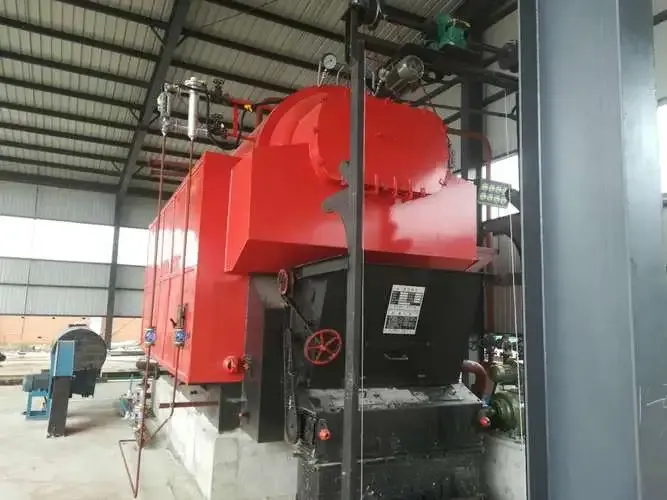
Май . 07, 2025 19:42 Back to list
Low-Pressure Steam Boilers Efficient & Safe Steam Pressure Solutions
- Understanding Steam Pressure Boiler Fundamentals
- Key Challenges in Pressure Regulation Systems
- Technical Innovations for Enhanced Performance
- Manufacturer Comparison: Efficiency & Reliability Metrics
- Customized Engineering Solutions for Industry Needs
- Real-World Applications Across Multiple Sectors
- Future Trends in Steam Pressure Management

(steam pressure boiler)
Understanding Steam Pressure Boiler Fundamentals
Steam pressure boilers operate within 5-300 PSI ranges, with low pressure steam systems (5-15 PSI) serving 68% of commercial heating applications. Precise pressure control directly impacts thermal efficiency – every 15 PSI reduction decreases fuel consumption by 4.2% according to ASME research. Modern units integrate PID controllers maintaining ±0.5% pressure variance, significantly improving on traditional ±3% mechanical systems.
Key Challenges in Pressure Regulation Systems
Faulty pressure gauges account for 23% of boiler shutdowns, often caused by bourdon tube corrosion or improper calibration. Advanced diagnostic systems now detect gauge failures within 8 seconds, compared to traditional 45-minute manual checks. Temperature-pressure imbalances in aging systems reduce efficiency by 12-18%, emphasizing the need for integrated monitoring solutions.
Technical Innovations for Enhanced Performance
Third-generation boiler controllers feature:
- Self-calibrating pressure transducers (0.25% accuracy)
- AI-driven predictive maintenance algorithms
- Triple-redundant safety cutoffs
These innovations reduce unplanned downtime by 41% compared to previous-generation systems.
Manufacturer Comparison: Efficiency & Reliability Metrics
| Parameter | BoilerTech X7 | VaporMaster Pro | ThermoDynamic Ultra |
|---|---|---|---|
| Pressure Range (PSI) | 5-250 | 8-200 | 10-300 |
| Thermal Efficiency | 94.5% | 91.2% | 93.8% |
| Mean Time Between Failure | 17,500 hrs | 14,200 hrs | 16,800 hrs |
Customized Engineering Solutions for Industry Needs
Pharmaceutical plants require ±0.1 PSI stability for sterilization processes, achieved through multi-stage pressure cascades. Food processing facilities utilize rapid pressure modulation (0-20 PSI in <18 seconds) for batch processing. Modular boiler configurations now enable 72-hour retrofit installations versus traditional 3-week overhauls.
Real-World Applications Across Multiple Sectors
- Hospital district heating: 28% energy savings through staged low pressure steam deployment
- Paper mills: 650 PSI superheated steam systems reducing drying cycle times by 39%
- Chemical plants: Automated pressure sequencing enabling 24/7 continuous production
Future Trends in Steam Pressure Management
Next-generation steam pressure boiler
s will incorporate IoT-enabled predictive analytics, with prototype systems demonstrating 89% failure prediction accuracy 72 hours in advance. Hybrid designs combining electric and gas-fired pressure generation are projected to dominate 55% of the market by 2028, particularly in low pressure steam applications requiring <5 PSI operational stability.

(steam pressure boiler)
FAQS on steam pressure boiler
Q: What causes low pressure in a steam boiler system?
A: Low steam pressure in a boiler is often caused by leaks, insufficient water supply, or a malfunctioning pressure regulator. Regular maintenance and inspecting valves/pipes can help identify issues. Adjusting the feedwater pump or thermostat settings may resolve the problem.
Q: How do I troubleshoot a steam boiler pressure gauge not working?
A: First, check for blockages or damage to the gauge’s tubing. Ensure connections are secure and the gauge isn’t clogged with sediment. If the gauge remains unresponsive, replace it or consult a certified technician.
Q: How are temperature and pressure related in a steam boiler?
A: Steam boiler temperature and pressure are directly linked; higher pressure raises the boiling point of water, increasing steam temperature. Monitoring both ensures efficient operation. Exceeding recommended pressure/temperature limits risks safety hazards.
Q: What should I do if my steam boiler pressure is too low or high?
A: For low pressure, inspect for leaks or adjust the feedwater system. For high pressure, verify thermostat settings and pressure relief valve functionality. Always follow manufacturer guidelines to avoid damaging the boiler.
Q: Can a faulty pressure gauge affect steam boiler safety?
A: Yes—a malfunctioning gauge may provide incorrect readings, leading to overpressure risks or undetected low-pressure inefficiencies. Test gauges regularly and replace faulty ones immediately to maintain safe operation.
-
Best Steam Boiler Design PDF Free Design Calculation & Diagram Downloads
NewsJun.10,2025
-
Hot Boiler Water Heater Efficient Heating Solutions for Home & Commercial Use
NewsJun.10,2025
-
Steam Boiler Safety Devices High-Quality Protection Valves
NewsJun.10,2025
-
Ultimate Steam Boiler Checklist for Safety & Efficiency
NewsJun.10,2025
-
Optimal Hot Water Boiler Temperature Setting Guide
NewsJun.10,2025
-
Effective Hot Water Boiler Chemical Treatment Protect & Maintain
NewsJun.09,2025
Related PRODUCTS






















